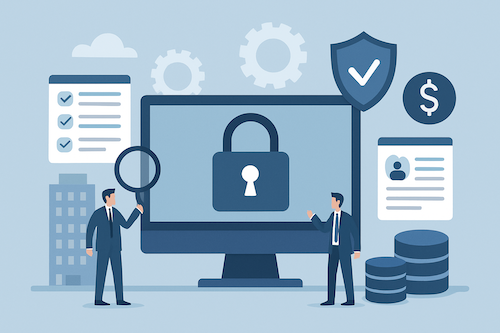
Table of Contents
Navigating the complex waters of international trade in 2025 and beyond demands more than just business acumen; it requires a robust framework for regulatory adherence. A critical component of this framework is compliance with the Office of Foreign Assets Control (OFAC), an agency of the U.S. Department of the Treasury. OFAC administers and enforces economic and trade sanctions against targeted foreign countries, individuals, groups, and entities. For any business touching global commerce, understanding and embedding OFAC compliance isn’t just good practice, it’s a fundamental necessity to sidestep severe repercussions.
The High Stakes: Perils of OFAC Non-Compliance
Why all the fuss about OFAC? Well, the potential fallout from non-compliance is significant. We’re talking about substantial financial fines that can cripple an organization, and in some instances, criminal charges. Beyond the direct monetary and legal hits, the damage to a company’s reputation can be long-lasting, eroding trust with partners, customers, and the market at large. Operational disruptions are almost a given, as investigations and remedial actions consume valuable time and resources. It’s clear that proactive compliance is far less costly than reactive damage control.
Enterprise Systems: Your Compliance Frontline
When it comes to operationalizing OFAC compliance, your enterprise systems are where the rubber meets the road. These platforms are the gatekeepers of data and transactions, making them pivotal for embedding necessary checks and controls. Consider these key systems:
- Enterprise Resource Planning (ERP) Systems: These are central hubs for customer and vendor master data. Many modern ERPs offer, or can integrate with, trade compliance modules capable of screening transactions and entities against sanctions lists. Insights distilled from numerous complex system deployments indicate that robust ERP configurations are a cornerstone of effective screening.
- Customer Relationship Management (CRM) Systems: The client onboarding process within a CRM is a critical checkpoint. Continuous monitoring capabilities, if integrated, can also flag existing customers who later appear on sanctions lists.
- Accounts Payable (AP) and Payment Systems: Before any payment leaves your organization, an OFAC check is essential. This applies to vendors, contractors, and any other third parties.
- Trade Management and Supply Chain Platforms: For businesses involved in international shipping and logistics, these platforms must screen all entities involved in the movement of goods.
- Vendor Onboarding and Management Platforms: Diligence on third-party suppliers is crucial. These platforms should incorporate sanctions screening before a vendor is approved.
A perspective forged through years of navigating real-world enterprise integrations suggests that the more deeply embedded these checks are, the lower the risk of an oversight.
Strategies for Weaving in OFAC Screening
How does one actually integrate these vital screening processes? Several pathways exist, each with its own set of considerations.
Many major ERP systems, such as those frequently discussed in the context of NetSuite, SAP, or Oracle, often provide native modules or functionalities for compliance. It’s worth investigating what your current system offers. However, for more specialized needs or enhanced capabilities, dedicated third-party sanctions screening software often provides a more comprehensive solution. These tools typically boast features like fuzzy logic matching (to catch near matches and aliases), real-time updates to sanctions lists, batch screening for periodic checks of entire databases, and dynamic rescreening when lists are updated. Integration is usually achieved via APIs.
Another powerful approach involves Integration Platform as a Service (iPaaS). iPaaS solutions can act as the connective tissue between disparate enterprise applications and specialized OFAC screening services, ensuring a smooth and automated flow of data. This is particularly useful in complex IT landscapes with multiple systems.
Key Technical and Process Points for Integration
Effectively integrating OFAC screening isn’t just about picking a tool; it’s about thoughtful implementation. Data mapping and quality are paramount. Accurate, clean data from your enterprise systems, often bolstered by strong Master Data Management (MDM) practices, is essential for minimizing false positives and ensuring accurate screening.
Organizations must also decide between real-time vs. batch screening. Real-time checks are often best for new customer onboarding or before transaction processing, while batch screening can be used for periodic checks of the entire customer/vendor database. The choice depends on risk appetite and operational impact.
Workflow automation is key to efficiently handling potential matches. This includes defining clear escalation procedures and case management tools for investigation. Speaking of matches, managing false positives is a common operational hurdle. Systems and processes should be designed to quickly review and disposition these, often using features within the screening software or custom workflows. Finally, robust audit trails are non-negotiable. Comprehensive logs and reporting capabilities are vital for demonstrating due diligence and satisfying OFAC’s stringent recordkeeping requirements.
The Horizon: Emerging Tech in OFAC Compliance
Looking towards 2025, technologies like Artificial Intelligence (AI) and Machine Learning (ML) are increasingly being applied to enhance screening accuracy. These advanced tools can help reduce false positives by learning from historical data and identify complex, nuanced evasion patterns that traditional rule-based systems might miss. This evolution aligns with the broader trend of leveraging innovative thinking to solve complex regulatory challenges.
Toward a Resilient Compliance Framework
The landscape of global sanctions is ever-evolving, growing in complexity. This necessitates that enterprises cultivate not just OFAC compliance measures, but a truly resilient and adaptable framework. Technology is a critical enabler, providing the tools for screening, monitoring, and reporting. However, these tools are most effective when part of a holistic compliance program:one that typically rests on five pillars: management commitment, thorough risk assessment, robust internal controls (where system integration plays a big part), periodic testing and auditing, and comprehensive training for relevant personnel. Building this integrated approach is the surest way to navigate the complexities of global commerce responsibly.
For further discussion on integrating compliance within your enterprise architecture, feel free to connect with me on LinkedIn.